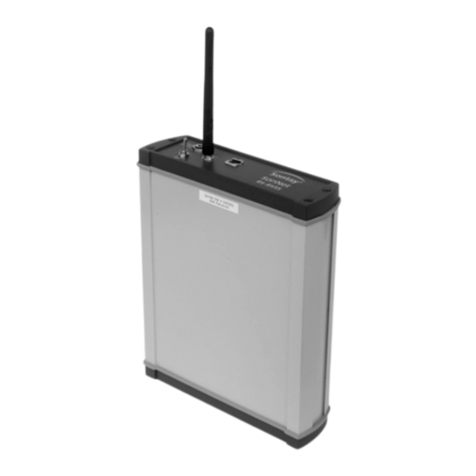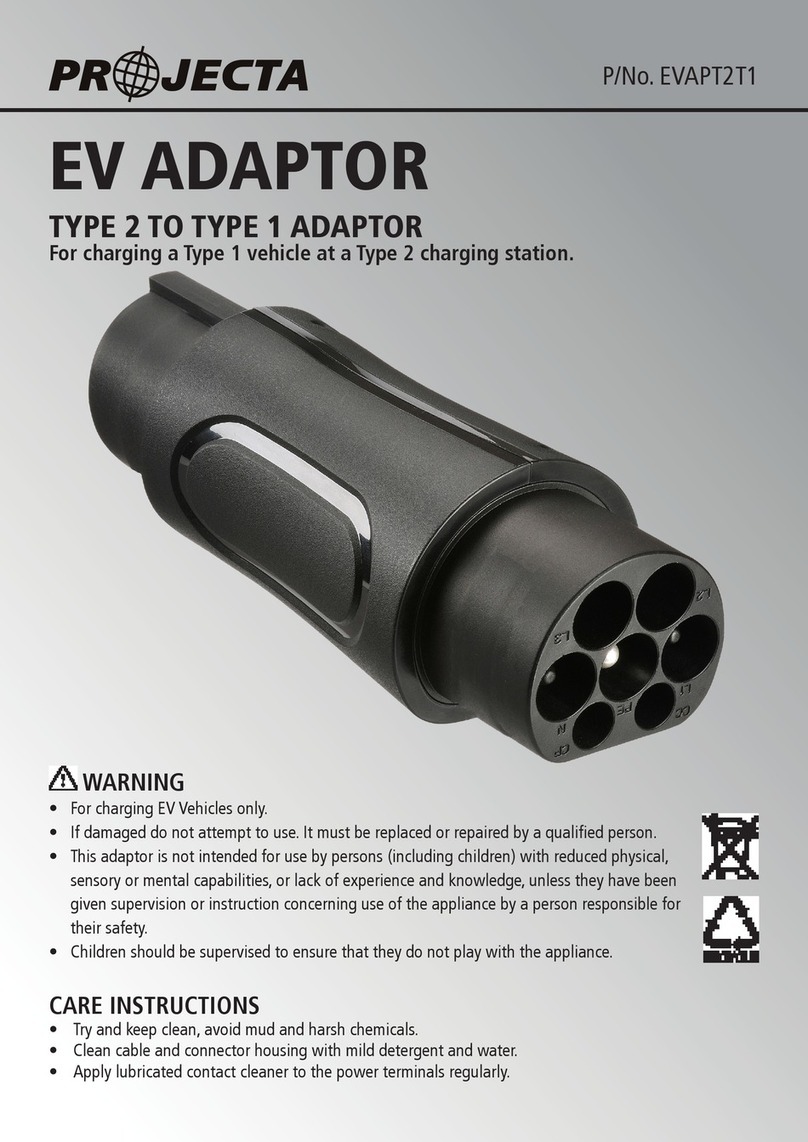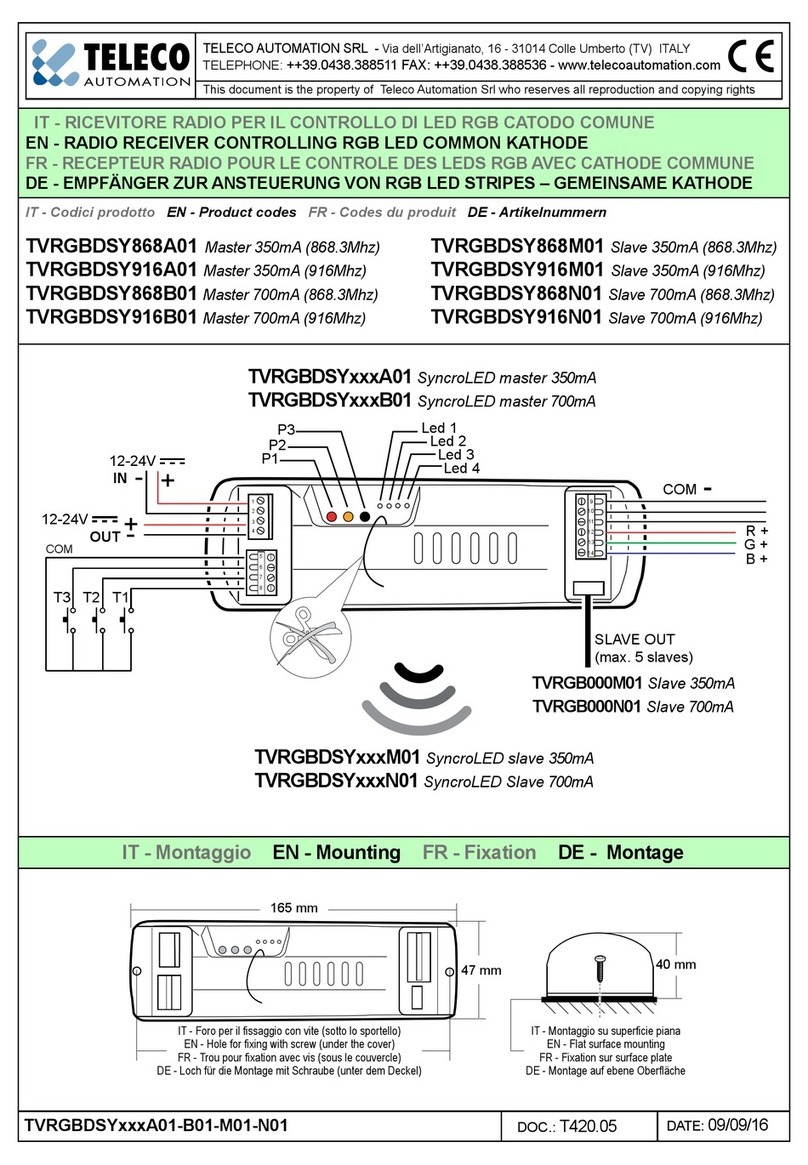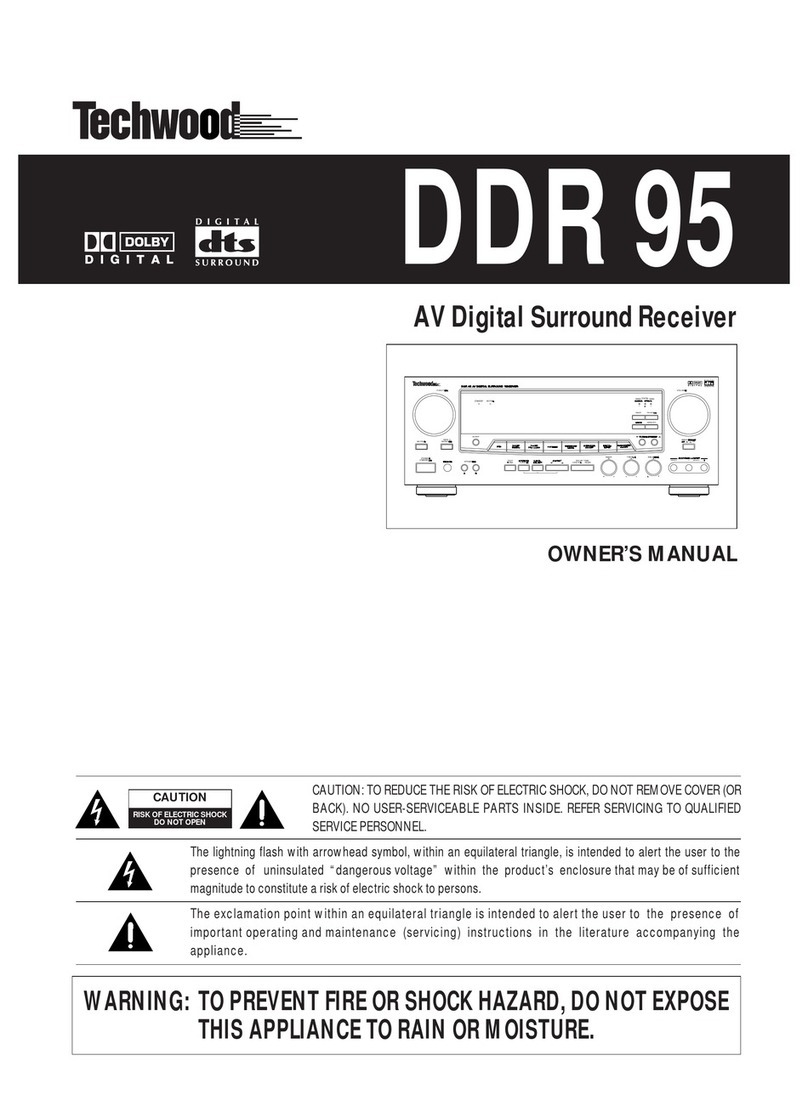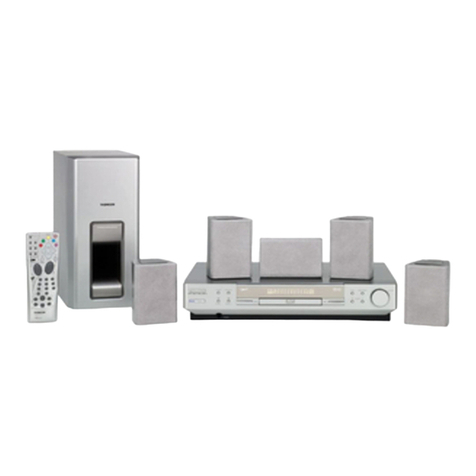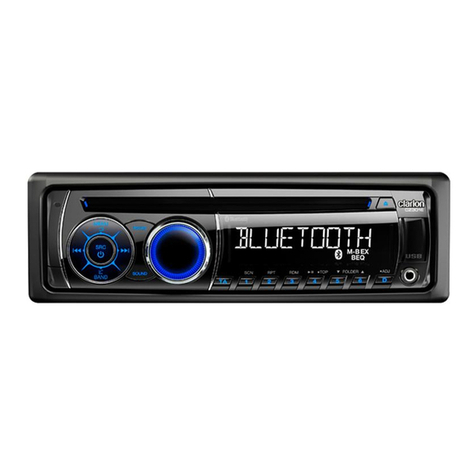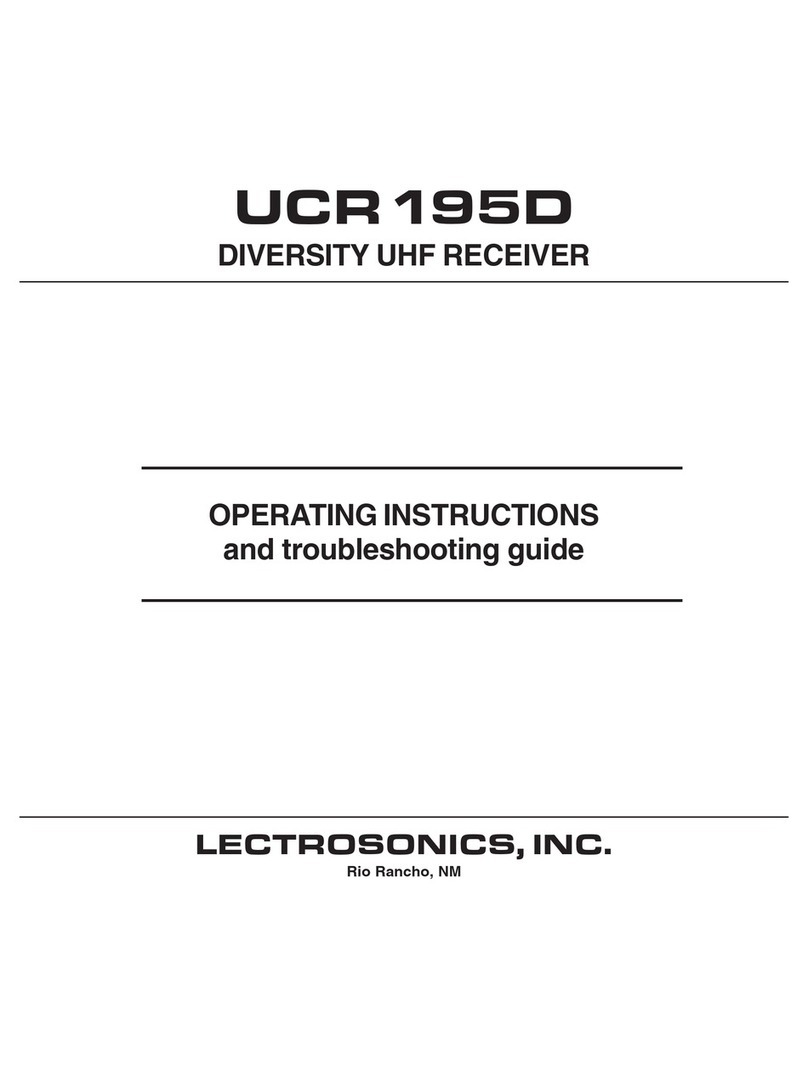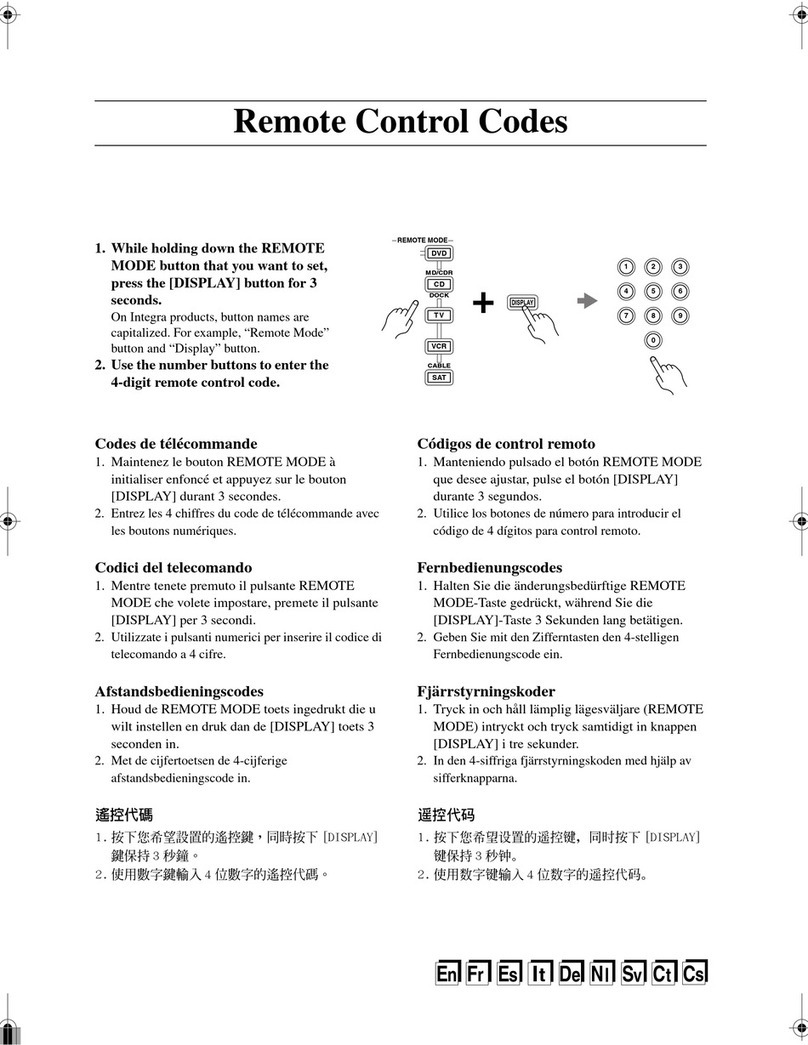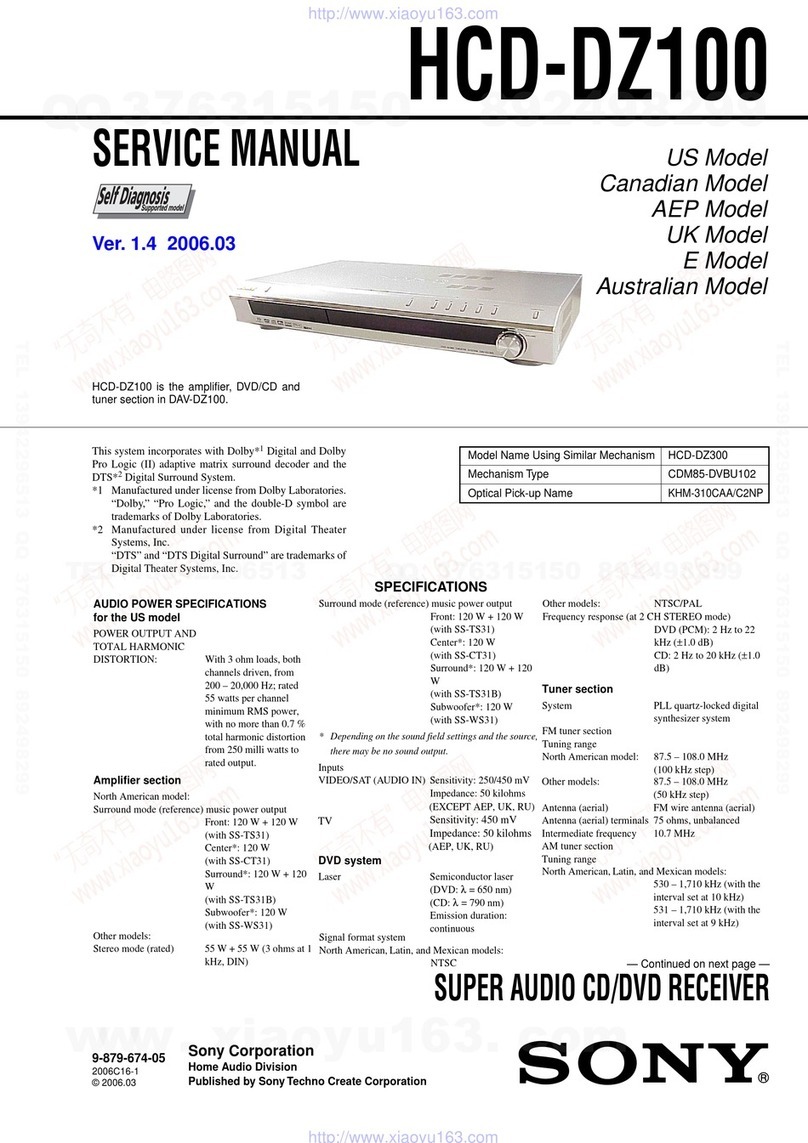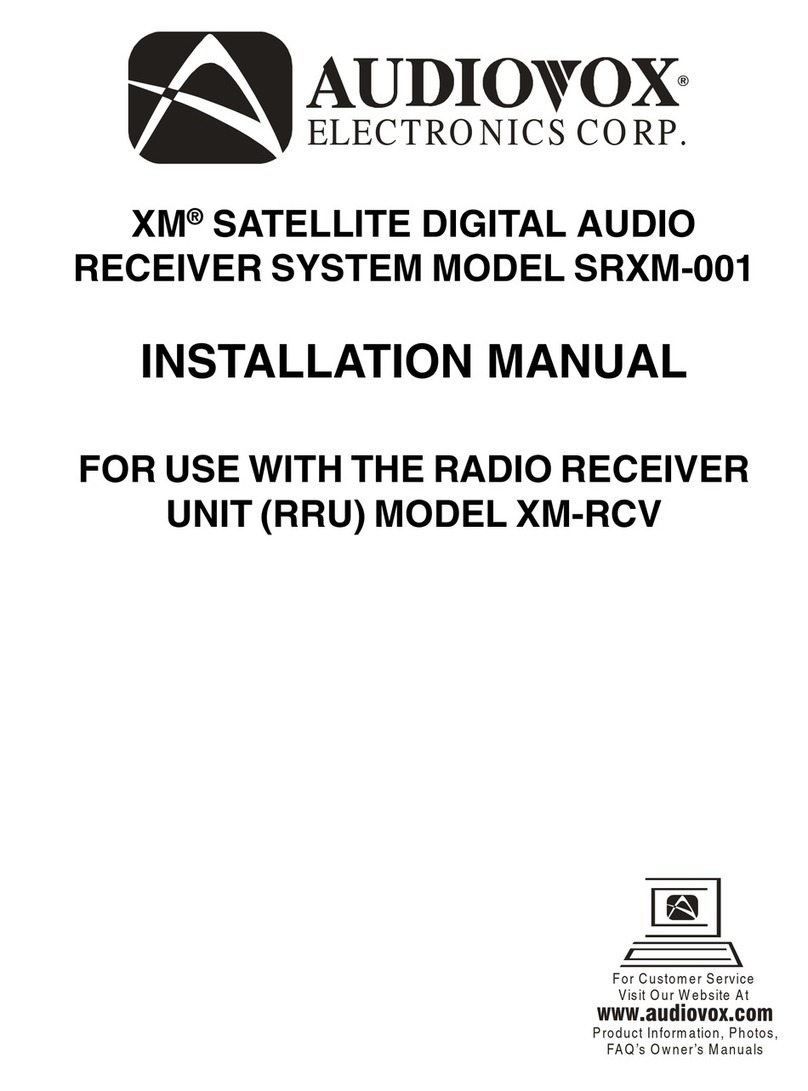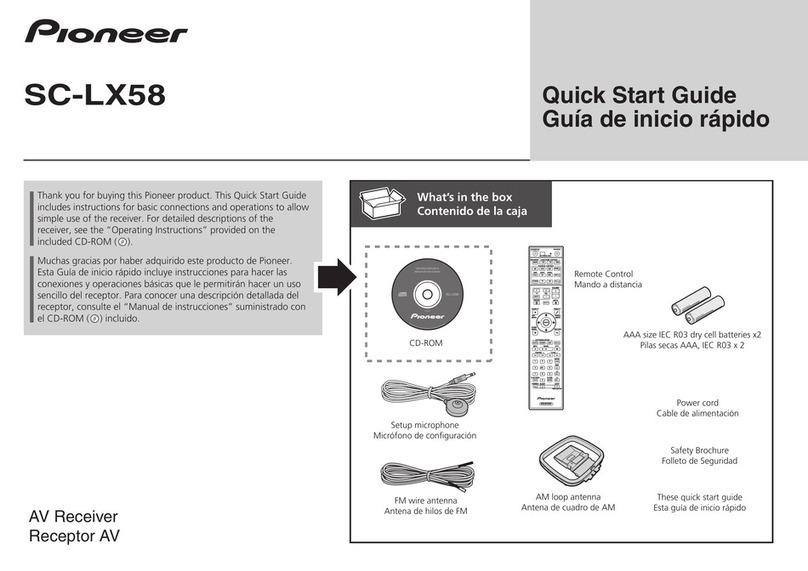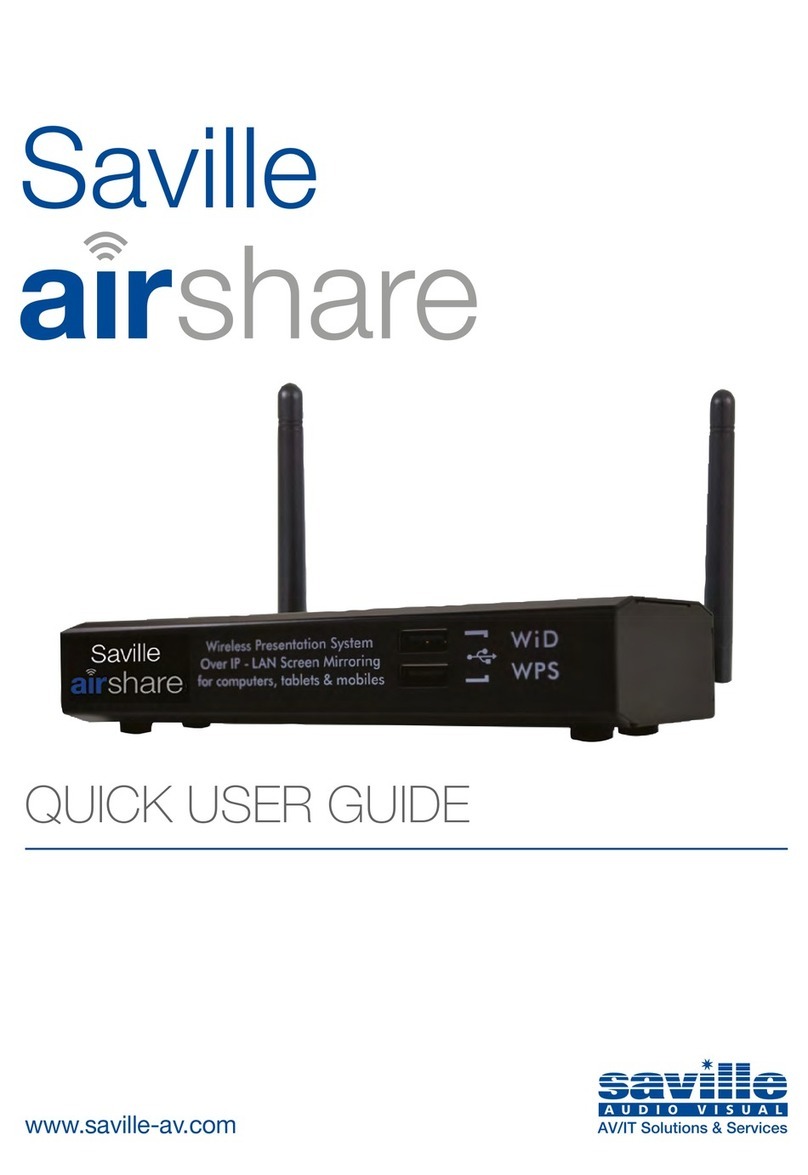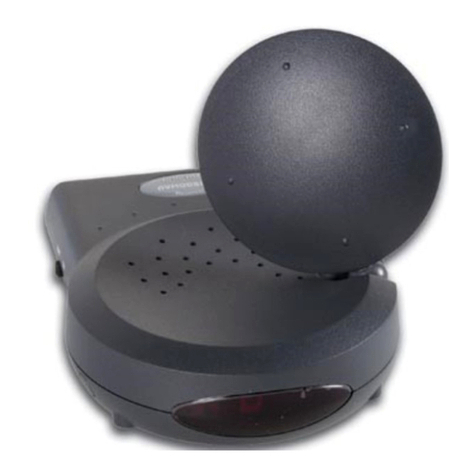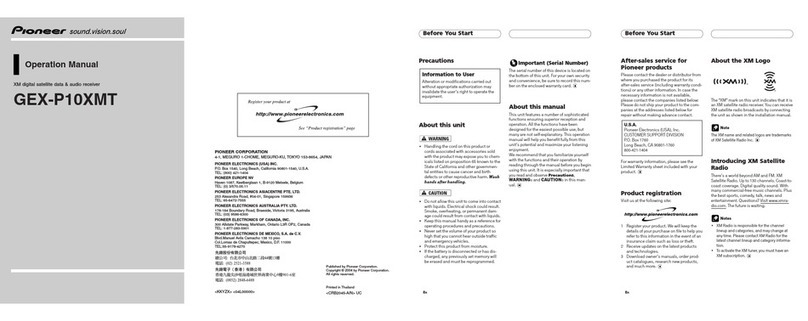Sontay RF--RXS--B User manual

INNOVATION • QUALITY • COMMITMENT • SUPPORT
... experts in field controls
RF-RXS-B System
USER MANUAL


Page1of87
Sontay®SonNetRadioSensorSystem
UserManual
forthe
RFRXSBBACnetIPReceiver
Version1.1
August2017

Page2of87
Audience
Thismanualisintendedforspecifiers,usersandinstallersoftheSontay®SonNetradiosensorsystem.
Content
ThismanualprovidesacompletereferencefortheSontay®SonNetradiosensorsystembasedontheRF
RXSBBACnetIPreceiver.
RelatedDocuments
TheSontay®SonNetradiosensorsystemSiteSurveyKitQuickStartGuide
TheSontay®SonNetradiosensorsystemSiteSurveyKitManual
TheSontay®SonNetradiosensorsystemQuickStartGuide
TheSontay®SonNetradiosensorsystemproductdatasheets

Page3of87
TableofContents:
Overview ................................................................................................................. 5
BatteryFittingandReplacement........................................................................................ 5
DisposalofBatteries ..................................................................................................... 5
DevicesTypes ............................................................................................................ 6
BatteryPoweredNodes ...................................................................................... 6
24VPoweredRouters......................................................................................... 8
230VacPoweredRouters................................................................................... 10
TheRFRXSBBACnetIPSystemReceiver .................................................................11
TheRFIOM.................................................................................................. 12
TheRadioNetwork .................................................................................................... 13
NetworkPlanningConsiderations.......................................................................... 14
TheRadioSystem ...................................................................................................... 16
Security................................................................................................................. 16
HowtheSelfHealingTreeNetworkisFormed....................................................................... 16
PropagationOfRadioSignalsinBuildings ............................................................................ 17
ExtensionAerials....................................................................................................... 18
FAQs .................................................................................................................... 19
Configuration&MonitoringSoftware ................................................................................ 20
InstallingCMS ............................................................................................... 21
StartingCMS ................................................................................................ 24
ImportingaSavedLayout .................................................................................. 25
TheCMSDesktopEnvironment ............................................................................ 26
LoggingOnasanAdministrator ............................................................................ 27
ChangingtheAdministratorPassword..................................................................... 27
AutoConfigurationMode .................................................................................. 28
ListingDevices............................................................................................... 29
ChangingDeviceLabels..................................................................................... 30
ViewingDeviceProperties.................................................................................. 31
ChangingDeviceConfigurations ........................................................................... 33
ConfigurableParameters ................................................................................... 33
RFIOMConfiguration ...................................................................................... 35
RFIOMStatusTab .......................................................................................... 35
Changingtheinputconfiguration .......................................................................... 36
Changingtheoutputconfiguration ........................................................................ 37
ManuallyAuthorisingaNewNode......................................................................... 38
RemovingaNodefromtheNetwork ...................................................................... 38
UsingtheGraphicalMapDisplay........................................................................... 39
SettingtheMapDisplayBackgroundImage ............................................................... 39
AddingDevicestotheMapDisplay ........................................................................ 40
IconPlan..................................................................................................... 40
DeviceStatus................................................................................................ 41
LinkStatus................................................................................................... 41
AutoUpdating............................................................................................... 42
RefreshingNodeData ...................................................................................... 42
CommunicationsLog ....................................................................................... 43
ChangingDisplayUnits ..................................................................................... 43
ConfigurationLog ........................................................................................... 44
UsingCMSToDocumentAWirelessNetwork............................................................. 45
SavingandOpeningLayouts ............................................................................... 45
ReceiverPrintPreview...................................................................................... 46
CommissioningMultipleNetworksontheSameSite ................................................................ 47
Precommissioneachnetworkawayfromsite ............................................................ 47
Commissioneachnetworkindividuallyonsite ............................................................ 47
CommissioningaSonNetSystem:AStepByStepGuide ............................................................ 48
BestPractisePoints .................................................................................................... 50
TroubleShooter’sGuide .............................................................................................. 51

Page4of87
EstimatingNetworkCoverageintheAbsenceofaSiteSurvey...................................................... 56
AttenuationPropertiesofCommonBuildingMaterials................................................... 57
TheInterfacetoBACnetIP ............................................................................................ 58
DefaultIPAddress .......................................................................................... 58
BACnetIPSettings .......................................................................................... 59
ResettingFactoryDefaults ................................................................................. 59
SonNettoBACnetPointsMapping......................................................................... 60
ReceiverMappedPoints.................................................................................... 60
NonCO2EDMappedPoints ................................................................................ 61
CO2EDMappedPoints ..................................................................................... 61
NonCO2RouterMappedPoints ........................................................................... 62
CO2RouterMappedPoints................................................................................. 62
RFIOMMappedPoints..................................................................................... 63
DescriptionofBACnetPointsbyDevice .............................................................................. 64
TheRFRXSBReceiver ...................................................................................... 64
EndDevicewithoutCO2Functionality...................................................................... 64
EndDevicewithCO2Functionality ......................................................................... 64
RouterwithoutCO2Functionality .......................................................................... 64
RouterwithCO2Functionality .............................................................................. 65
RFIOM ...................................................................................................... 65
RFRXSBPICS .......................................................................................................... 66
BACnetRequirements ...................................................................................... 66
BACnetStandardizedDeviceProfile(AnnexL) ............................................................ 66
BACnetInteroperabilityBuildingBlocks(BIBBs)(AnnexK) ............................................... 66
StandardDeviceBindingMethodsSupported............................................................. 67
StandardObjectTypesSupported ......................................................................... 67
AnalogInputObjectType................................................................................... 67
AnalogValueObjectType .................................................................................. 69
BinaryInputObjectType ................................................................................... 76
BinaryValueObjectType................................................................................... 80
MultiStateInputObjectType.............................................................................. 83
MultiStateValueObjectType ............................................................................. 83
OctetStringValueObjectType ............................................................................ 85
DeviceObjectType ......................................................................................... 85
DataLinkLayerOptions .................................................................................... 86
NetworkOptions............................................................................................ 87
SegmentationCapability.................................................................................... 87
DeviceAddressBinding..................................................................................... 87
CharacterSetsSupported .................................................................................. 87

Page5of87
Overview
The RFRXSB SonNet Wireless receiver allows quick and seamless integration of SonNet devices into
buildingmanagementsystems.It automaticallymaps data fromSonNet end devices intoBACnetobjects
whicharetransmittedviathevendorindependentBACnetIPcommunicationprotocol,usingasimpleweb
browserinterface.DependingonthelayoutoftheSonNetnetworkitcanconnectupto40nodes.
The receiver collects data from all other devices on the wireless network, including measurements from
sensors,linkquality,batterylevelsforallbatterypowereddevices,hoursrunforalldevicesandthecurrent
statusofalldevices.
The wireless devicesare based on directsequence spread spectrumcommunication in the 2.42.5GHz
band,compliantwithIEEE802.15.42006.
AllnodeshaveauniqueMACaddress,equivalenttoauniqueserialnumber.
TheRFRXSBhasauniqueEthernetMACaddress.
Allnodesretaintheirconfigurationpropertiesacrossapowerfailure.
BatteryFittingandReplacement
Whenabatteryisinstalled,orwhenitisreplaced,observingthecorrectpolarityisveryimportant.Fitting
thebatteryincorrectlymayresultinpermanentdamagetothedevice.
Recommendedbatteriesare3.6Vdc2.4AhAAsizeLithiumThionylChloridetypesforspacehousingsensors,
or 3.6Vdc 2.1Ah 2/3 A size LithiumThionyl Chloride types for plant housing sensors, and are not
rechargeable.
Thistypeofbatteryshouldbestoredinaclean,cool(notexceeding+30°C),dryandventilatedarea.
DisposalofBatteriesWarning!Fire,ExplosionandBurnHazard
Do not shortcircuit, crush, disassemble heat above 100°C (212°F), incinerate, or expose the battery
contentstowater.Donotsolderdirectlytothecell.
NB All batteries must be disposed of in accordance with EC Directive 2006/66/EC, amended by EU
Directive2008/12/EC.

Page6of87
DevicesTypes
BatteryPoweredNodes
BatterypoweredsensornodesareusedinconjunctionwiththeSontay®RFRXSBreceiver,andifrequired
(dependingoninstallationtopography),Sontay®RFRRseries of routers and RFIOMIOmodules. Data is
transmittedback to the receiveratconfigurabletimeintervals,oronaconfigurablechange in measured
value.Eachsensorretainstheseconfigurationsifthebatterybecomesdischargedorrequiresreplacement.
Thesensorsautomaticallyfindthebestpathbacktothereceiver,whichmaybedirectlytothereceiveror
via“parent”routers.
Topowerabatterypowerednode,jumperJ600mustbefitted.Toswitchoff,removeJ600.
Batterypowerednodesareavailablein4formats:
•Space mounting temperature, with setpoint, momentary switch, fan speed, VFC input and CO2
options
oNB setpoint,momentary switch and fan speed optionsare not availablewiththe CO2
option
•SpacemountingRH&T,withsetpoint,momentaryswitch,fanspeed,VFCinputandCO2options
oNB setpoint, momentary switch andfan speed options are not availablewiththeCO2
option
•Plantmountingtemperature
•PlantmountingRH&T
SpaceMountingSpecification:
RadioOutput:
Frequency2.4GHz
16channels,automaticallyselected,directsequencespreadspectrum
ComplianceIEEE802.15.42006
AerialCharacteristics:
Gain 1.2dBi
VSWR 1.5:1
DataEncryption: AES128
PowerOutput: 0dBm(1mW@50Ω)
Accuracy:
Temperature±0.3°C
OptionalRH±3%RH
BatteryType: 3.6VAA2.4AhLiSOCl2,nonrechargeable
BatteryLife: >3years(dependingonconfiguration)
Housing:
Material: ABS(flameretardant)
Dimensions: 115x85x28mm
Environmental:
Operating:
Temperature: 10°Cto+50°C
RH: 0to90%,noncondensing
Storage:
Temperature: 10°Cto+80°C
RH: 0to90%,noncondensing
Countryoforigin: UK
Refertoproductdatasheetsforinstallationinstructions.

Page7of87
PlantMountingSpecification:
RadioOutput:
Frequency2.4GHz
16channels,automaticallyselected,directsequencespreadspectrum
ComplianceIEEE802.15.42006
AerialCharacteristics:
Gain 2.0dBi
VSWR 2:1
DataEncryption: AES128
PowerOutput: 0dBm(1mW@50Ω)
Accuracy:
Temperature±0.3°C
OptionalRH±3%RH
BatteryType: 3.6VAA2.4AhLiSOCl2,nonrechargeable
BatteryLife: >3years(dependingonconfiguration)
Housing:
Material: ABS(flameretardanttypeVO)
Dimensions: 115x85x28mm
Mounting: Holes4mmspaced85mmapart
Protection: IP65
Environmental:
Operating:
Temperature: 10°Cto+50°C
RH: 0to90%,noncondensing
Storage:
Temperature: 10°Cto+80°C
RH: 0to90%,noncondensing
Countryoforigin: UK
TemperatureSensorTypes:
Duct
Outsideair
Outsideairwithsolarradiationshield
Immersion
Strapon
Flyinglead
Refertoproductdatasheetsforinstallationinstructions.

Page8of87
24VPoweredRouters
24VpoweredroutersareusedinconjunctionwiththeSontay®RFRXSBreceiver,RFIOMIOmodulesand
RFRSseriesofbatterypoweredradiosensors,andareusedtoroutesignalsfrombatterypowerednodes
andotherrouterstothe receiver module, where thesignalstrengthofadirectpath is not sufficient for
reliablecommunications.NBEachroutercansupportamaximumof16“children”,whichcanconsistofa
maximumof8batterypowerednodesand8routers,orupto16routersiftherearenobatterypowered
nodes. Consideration should be given on network planning for redundancy in case of router failure or
damage.
Data is transmitted back to the receiver at configurable time intervals, or on a configurable change in
measured value. Each sensor retains these configurations if the battery becomes discharged or requires
replacement.Routersautomaticallyfindthebestpathbacktothereceiver,whichmaybedirectlytothe
receiverorviaother“parent”routers.
Topowerarouter,jumperJ500mustbefitted.Toswitchoff,removeJ500.
24Vpowerednodesareavailablein5formats:
•Spacemountingtemperature,withsetpoint,momentaryswitch,fanspeed,VFCinput,PIRandCO2
options
oNB setpoint,momentary switch and fan speed optionsare not availablewiththe CO2
option
•Space mounting RH&T, with setpoint, momentary switch, fan speed, VFC input, PIR and CO2
options
oNB setpoint,momentary switch andfan speed options are not availablewith the CO2
option
•Plantmountingwithnosensorfunctions
•Plantmountingtemperature
•PlantmountingRH&T
SpaceMountingSpecification:
RadioOutput:
Frequency2.4GHz
16channels,automaticallyselected
Directsequencespreadspectrum
ComplianceIEEE802.15.42006
AerialCharacteristics:
Gain 1.2dBi
VSWR 1.5:1
DataEncryption: AES128
PowerOutput: +10dBm(10mW@50Ω)
Accuracy:
Temperature±0.3°C
OptionalRH±3%RH
PowerSupply: 24Vac/dc
Housing:
Material: ABS(flameretardant)
Dimensions: 115x85x28mm
Environmental:
Operating:

Page9of87
Temperature: 10°Cto+50°C
RH: 0to90%,noncondensing
Storage:
Temperature: 10°Cto+80°C
RH: 0to90%,noncondensing
Countryoforigin: UK
Refertoproductdatasheetsforinstallationinstructions.
PlantMountingSpecification:
RadioOutput:
Frequency2.4GHz
16channels,automaticallyselected,directsequencespreadspectrum
ComplianceIEEE802.15.42006
AerialCharacteristics:
Gain 2.0dBi
VSWR 2:1
DataEncryption: AES128
PowerOutput: +10dBm(10mW@50Ω)
Accuracy:
Temperature±0.3°C
OptionalRH±3%RH
PowerSupply: 24Vac/dc
Housing:
Material:ABS(flameretardanttypeVO)
Dimensions:115x85x28mm
Mounting:Holes4mmspaced85mmapart
Protection:IP65
Environmental:
Operating:
Temperature: 10°Cto+50°C
RH: 0to90%,noncondensing
Storage:
Temperature: 10°Cto+80°C
RH: 0to90%,noncondensing
Countryoforigin: UK
TemperatureSensorTypes:
Duct
Outsideair
Outsideairwithsolarradiationshield
Immersion
Strapon
Flyinglead
Refertoproductdatasheetsforinstallationinstructions.

Page10of87
230VacPoweredRouters
The230VacpoweredRFRRMPRrouterscanbeusedinconjunctionwiththeSontay®RFRXSB receiver,
RFIOM IOmodules,24VpoweredRFRR routersandRFRS seriesofbatterypoweredradiosensors,and
areusedtoroutesignalsfrombatterypowerednodesandotherrouterstothereceiver,wherethesignal
strength of a direct path is not sufficient for reliable communications. NB Each router can support a
maximumof16“children”,whichcanconsistofamaximumof8batterypowerednodesand8routers,or
upto16routersiftherearenobatterypowerednodes.Considerationshouldbegivenonnetworkplanning
forredundancyincaseofrouterfailureordamage.
NBtheRFRRMPR230Vachasnosensorcapability.
Specification:
RadioOutput:
Frequency2.4GHz
16channels,automaticallyselected
Directsequencespreadspectrum
ComplianceIEEE802.15.42006
AerialCharacteristics:
Gain 2.0dBi
VSWR <2:1
DataEncryption: AES128
PowerOutput: +10dBm(10mW@50Ω)
PowerSupply: 85–240Vac@50/60Hz
Housing:
Material:ABS(flameretardant)
Dimensions:116x106x52mm
Environmental:
Ambient:
Temperature: 30°Cto+70°C
RH: 0to90%,noncondensing
Protection: IP30

Page11of87
TheRFRXSBBACnetIPSystemReceiver
The SonNet®RFRXSB receiver collects data from all other devices on the radio network, including
measurementsfromsensors,linkqualityforalllinksformedinthenetwork,batterylevelsforallbattery
powered devices, hours run for all devices and the current status of all devices.NB Each receiver can
supportamaximumof16“children”,whichcanconsistofamaximumof12batterypowerednodesand4
routers,orupto16routersiftherearenobatterypowerednodes.
•AnRJ45EthernetsocketisprovidedforconnectiontoBACnetIPsystems.
•A USB socket is provided for connection to a PC or laptop running the Sontay SonNet CMS
software.
NBIftheUSBportofanRFRXSBreceiverisconnected,theEthernetportistemporarilydisableduntilthe
USBportisdisconnectedagain.
ReceiverSpecification:
RadioOutput 2.4GHz,16channelsautomaticallyselected
Directsequencespreadspectrum
Compliance IEEE802.15.42006
AerialCharacteristicsGain3.0dBi
VSWR<2:1
Dataencryption AES128
Powersupply 24Vdc±15%
24Vac±15%,50/60Hz
Communication:
USB2.0
RJ45Ethernet(forBACnetIPprotocol)
BIBBssupported
DSRPB
DSWPB
DMDDBB
DMDOBB
DMDCCB
DSRPMB
DMRDB
Environmental:
OperatingTemp.10˚Cto+50˚C
OperatingRH 090%,noncondensing
StorageTemp 10to+80˚C
StorageRH 090%,noncondensing
Dimensions 100x95x65mm
Weight150g
Countryoforigin UK
Refertoproductdatasheetsforinstallationinstructions.

Page12of87
TheRFIOM
TheRFIOMactsaslocalI/OwithconnectivitytotypicalHVACequipmentsuchasfancoilunits(FCUs)and
variableairvolume(VAV)boxes.TheRFIOMreadsitsdigitalandanalogueinputsandtransmitsthevalues
wirelesslytoaBMScontrollerviatheRFRXSBreceiver.TheRFIOMreceivesitsoutputvalueswirelessly
fromaBMScontrollerviatheRFRXSBreceiver.TheRFIOMhasfullrouterfunctionality.
Typically,asimplesystemwillconsistof;
•BatterypoweredEDs
•Poweredrouters(ifrequired)
•RFRXSBreceiver
•RFIOMs
The EDs (and routers, where applicable) operate in the normal way. Data from the receiver is made
availabletothecontrollerviaBACnetIP.TheSonNetdatapointsarethenusedbythecontrolleraspartofa
controlstrategy,whichwill typicallycalculateheatingandcoolingdemands,damperpositionsetc.These
calculated control values will then be passed back to the receiver via BACnet IP and passed from the
receiveroverthewirelessnetworktotheRFIOM.
TheRFIOMoutputsaredefinedasBACnetobjectssothattheirvaluescanbesetbythecontrolstrategyvia
thereceiver.
RFIOMSpecification:
RadioOutput:
Frequency2.4GHz,16channels,automaticallyselected,Directsequencespreadspectrum
Compliance IEEE802.15.42006
AerialCharacteristics:
Gain 2.0dBi
VSWR 2:1
DataEncryption: AES128
PowerOutput: +10dBm(10mW@50Ω)
PowerSupply: 24Vac/dc
Inputs:
4xuniversalinputs;
420mA(looporexternallypowered),into750Ωmaximumimpedance
010Vdc,into4k7Ωminimumimpedance
Resistive,1.5kΩminto60kΩmax
Digital,VFC
Outputs:4x010Vdclinear,@20mAperoutput
LEDIndication:
Network
Data
Digitalinput
Housing: DINRailH86mmxW58mmxL104mm(excludingaerial)
Environmental:
Operating:
Temperature:10°Cto+50°C
RH: 0to90%,noncondensing
Storage:
Temperature:10°Cto+80°C
RH: 0to90%,noncondensing
Countryoforigin:UK

Page13of87
TheRadioNetwork
A Sontay® SonNet radio system is comprised of a receiver, battery powered sensors, RFIOMs and
permanentlypoweredrouters.
Routers, though permanently powered, can also have sensing elements, accomplishing both router and
sensorsfunctions.Routers,RFIOMsandsensorscaneithercommunicatedirectlywiththereceiverorvia
otherroutersandRFIOMs.RFIOMsandroutersarerequiredtobepermanentlypoweredastheyneedto
stay “awake” at all times to allow signals from “child” nodes to be forwarded to their “parent” nodes.
Batterypoweredsensorsonly“wake”forveryshortperiodstosenddata.
Thereceivercansupportamaximumof16directlyconnected“child”devices,ofwhichamaximumof12
can be battery powered EDs (End Devices), plus up to 4 routersor RFIOMs. If no EDs are directly
connected,thereceivercanacceptupto16directlyconnectedroutersorRFIOMs.
RFIOMsandrouterscansupportamaximumof16directlyconnected“child”devices,ofwhichamaximum
of8canbeEDs,plusupto8routers.IfnoEDsaredirectlyconnected,therouterorRFIOMcanacceptup
to16directlyconnectedroutersorRFIOMs.
There can be a maximum
depthof8layersofrouters
in a network and a
maximum of 40 nodes per
network with the RFRXSB
receivers.

Page14of87
NotethatEDscanonlyroutetheirsignalstothereceiverdirectlyorthroughRFIOMsandrouters,andnot
throughotherbatterypowereddevices.
WhenplanningaSonNetradionetwork,itisstronglyrecommendedthattheSontay®SonNetSiteSurveyKit
beused.Thiseasytousepackageallowsinstallerstotestsignalstrengthsbetweenlocationsrequiredfor
EDsandthereceiverpriortoinstallingthefullsystem.Itcanalsoidentifywhetherroutersareneededto
ensurereliablecommunicationsbetweenalldevicesonthenetworkbacktothereceiver.Thisremovesany
guessworkfromplanningasystemandallowstheinstallertoorderexactlyandonlythedevicesrequired.
SeetheSontay®SonNetradiosensorsystemSiteSurveyKitQuickStartGuideandTheSontay®SonNetradio
sensorsystemSiteSurveyKitManualforfulldetails.
NetworkPlanningConsiderations
WhenplanningaSonNetradiosystem,itisalwaysworthconsideringtheplacementofrouters,andshould
becapableofhandlingtheconsequencesofarouterfailingorbeingdamaged.
Example:
Consideranetworkwitharequirementfor16EDs:
1. At least one router is required, as
16 directly connected EDs will
exceed the maximum limit of 12
(see page 13). Four EDs will be
orphaned.
2. A single router (R1) will work,
butgivesnoredundancyifthe
routershouldfail.

Page15of87
3. Optimal network uses
2routers,R1andR2.
4. If either of the
routersfails, the
network can still be
maintained, as the 2
orphanedEDscanre
route via the other
router.

Page16of87
TheRadioSystem
TheradiosystemusedbytheSontaySonNetdevicesisdividedinto3sectionsor‘layers’.
1. Theradiolayeriswherephysicalcontroloftheradiosignalisdone.Thisconformstointernational
standard 802.15.4, and determines the frequency of the radio signals, the number of ‘channels’
availableforuse,thebandwidthandpowerlevelofthesignaletc.Thereare16channelsavailable,and
thebestoneisautomaticallyselectedbythereceiver.ThefrequenciesusedareintheISM(Industrial,
ScientificandMedical)2.4GHzband,withamaximumdatarateof250kb/s.
2. Thenetworkmanagementlayeriswheretheselfhealingtreefunctionalityisrun,whichcontrols
networktopology.
3. The application layer determines what the device does –i.e.makesitatemperaturesensing
device, a router or a receiver. SonNet devices use specific applications, and include features such as
configurationproperties.
Security
AllSonNetsystemdeviceshavethesame,uniquenetworkidentifier.OnlydeviceswiththecorrectIDwillbe
allowedtojointhenetwork.TheIDusedbysystemdevicesisdifferentfromtheIDusedforsitesurveykit
(SSK) devices. Hence, SSK devices cannot join a system network and vice versa. When a SonNet system
networkhasbeenformed,itcanbe‘locked’topreventanyunauthoriseddevicesjoining,eveniftheyare
SonNetdevices.CMScanbeusedtosubsequentlyauthoriseextraSonNetsystemdevicesifrequired.
AlldatatransmittedbySonNetdevicesisencryptedusingAES128.
HowtheWirelessNetworkisFormed
Thenetworkisformedbasedon3rules,andinaspecificorderofpriority.
1. Howmany‘hops’adeviceisawayfromthereceiver.
Ifadevicecancommunicatedirectlywiththereceiver,itwill,evenifthelinkqualityispoorerthanifit
wentthrougha router orRFIOM. Ifadevicehasa choiceofmorethanonerouterorRFIOM,itwill
choosetherouterorRFIOMclosesttothereceiver(theleast number ofhopsaway),evenif the link
qualityispoor.
2. Thenumberof‘child’devicesarouterorRFIOMalreadyhas.
ARFIOMorroutercanhaveamaximumof16‘children’.IfadevicehasachoiceofmorethanoneRF
IOMor router of the same ‘hop’ level, it will choose the router or RFIOM with the least number of
children,evenifthelinkqualityispoor.
3. SignalStrength(linkquality).
Finally,ifadevicehasachoiceofmorethanoneRFIOMorrouterofthesametierlevelandthesame
numberofchildren,itwillchoosetherouterorRFIOMwiththebestlinkquality.
If,foranyreason,adevice(ED,RFIOMorrouter),losesitspreferredpathbacktothereceiver,itwill
automatically search for an alternative – still obeying the 3 rules above in sequence. If, despite
employingDirectSequenceSpreadSpectrum(DSSS)techniques,interferenceonthecurrentlyoccupied
channel prevents communications, the receiver will automatically look for another channel which is
clear.Allotherdevices,havinglosttheirlinkstothereceiver,willthenalsoautomaticallyscanthe16
channelsuntiltheyfindthereceiveragain,andthenetworkwillreformwithoutuserintervention.

Page17of87
PropagationofRadioSignalsinBuildings
Thepropagationofmicrowaveradiosignalsinabuildingcanbeaffectedinseveralways:
Attenuation
Radiosignalstrengthisattenuatedwhenitpassesthroughair.Signalsare
attenuated much more when passing through other media, such as
materialstypicallyusedin construction, such as brick,stone, wood and
especiallysteel.
Reflection
Dependingonthe building,radio signals can take manypaths from the
transmittertothereceiver,ratherthanjustonesinglepath.
‘Multipath’ signals can have the effect of cancelling each other out,
reducingoverallreceivedsignalstrength.
Scattering
Scatteringtheradiosignalcanalsoreduceitssignalstrength.
Receiver
Transmitter

Page18of87
ExtensionAerials
WhenusingtheRFAERIALPM2or RFAERIALPM5extensionaerials,itisimportanttoobservesomebasic
rulesforsitingandmounting.
1. Alwaysensurethereisamuchclearspacearoundtheaerialaspossible.
2. Generallyspeaking,wherepossiblemounttheaerialashighaspossibleonthesamefloorasthe
routersandEDs
3. Don’tmountbetweenmetalsurfaces(forexamplesteelIbeams)inceilingspaces
4. Whereverpossible,mounttheaerialonametalgroundplane(suchasthetopofametalpanel)
5. ThecoaxialcableusedfortheRFAERIALPM2or RFAERIALPM5extensionaerialsissemirigid
andshouldnotbebentattoosharpanangleortootightaradius.Itisrecommendedthatthe
minimumbendingradiusis5cms
6. Alwaysmounttheaerialvertically.Thisproducestheoptimumradiationpatternandsignal
strength
7. Extensionaerialscanbeusedwithreceivers,routersandRFIOMmodules.
8. Aerialextensionsshouldnotexceed5mtopreventexcessivelossofsignal.
Table of contents
Other Sontay Receiver manuals
